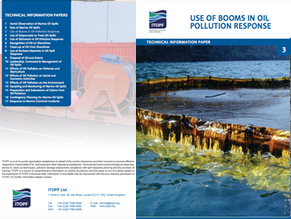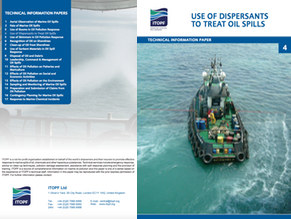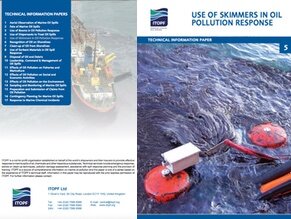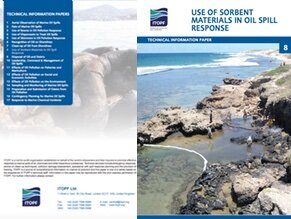Response Techniques
Once oil is spilled at sea, it will naturally spread, fragment and disperse under the influence of wind, waves and currents.
For spills in coastal waters, the oil will often drift towards the shore and become stranded due to the action of waves and tides. In order to contain the oil at the spill site, recover the oil floating on the sea and clean-up any oil that might become stranded on the shore, there are a variety of techniques that can be employed. The prevailing weather and sea conditions, the characteristics of the oiled shoreline and the nature of the oil can all combine to pose challenges to any clean-up operation.
At-Sea Response

Several options are available to respond to oil at sea and can be considered in three broad strategies; containment and recovery, in-situ burning and dispersant application. The selection of the most appropriate strategy will depend on many factors, including; the response resources available, the national and local regulations on oil spill response, the spill scenario and the physical and ecological characteristics of the area impacted by the spill.
Shoreline Clean-Up and Response

The majority of ship-source oil spills occur close to the coast and, as a result, many spills result in contamination of shorelines. Oil reaching stranding on the shore can cause significant environmental and economic impacts and may also largely determine the political and public perception of the scale of the incident, as well as the over costs.
When oil does reach the shoreline, considerable effort may be required to clean the affected areas. It is therefore essential that comprehensive and well-rehearsed arrangements for shoreline clean-up are included in contingency plans. The techniques available for shoreline clean-up are relatively straightforward and do not normally require specialised equipment. However, inappropriate techniques and poor organisation can aggravate the impacts caused by the oil itself.
Explore Documents on Response Techniques
TIP 01: 海上流出油の空中監視
本技術資料は、効果的な空中監視を行うための助言と指針を示すものである。
Categories: Fate of Oil Spills, Response Techniques, Planning & operations, Spill Response, Technical Information Paper (TIPS)
TIP 03: 油汚染対応におけるオイルフェンスの使用
本技術資料は、オイルフェンス・デザインの原則、並びに二つの主なオイルフェンス展張の
方法、つまり海上での船舶による曳航及び浅水域又は沿岸水域での係留について説明する。
Categories: Response Techniques, Containment & Recovery, Planning & operations, Technical Information Paper (TIPS)
TIP 04: 流出油処理における油処理剤の使用
本技術資料は、船舶を流出源とする海洋油流出への対応のために利用可能な様々な選択肢
の一つとして、浮遊油に対する油処理剤の使用及びその制限について、概要を説明する。
Categories: Response Techniques, Dispersants, Technical Information Paper (TIPS)
TIP 05: 油汚染対応における油回収機の使用
本技術資料では、油流出対応中に遭遇する可能性が最も高い状況において油回収機を効果的
に使用するための基本的要件を説明する。したがって、本シリーズの他の技術資料、特にオ
イルフェンスの使用、海岸線清掃方法、油の処分に関する資料と併せて読む必要がある。
Categories: Response Techniques, Containment & Recovery, Planning & operations, Technical Information Paper (TIPS)
TIP 06: 海岸線における油の確認
大規模な流出の場合には、漂着油の流出源が明らかな場合がある。しかし、流出した油の
量が少ない場合には、損害や清掃費用の求償のために流出源の特定が問題となる場合が多
い。本技術資料の目的は、読者が様々な海岸線に漂着した油の種類と量の両方を確認する
ための一助となることである。
Categories: Response Techniques, Planning & operations, Technical Information Paper (TIPS)
TIP 07: 海岸線における油の清掃
本技術資料では、一般的に利用される海岸清掃方法について説明し、様々な海岸線におけ
る作業の段階毎に最適な方法について助言を提供する。
Categories: Response Techniques, Technical Information Paper (TIPS)
TIP 08: 油流出対応における油吸着材の使用
本技術資料では、利用可能な油吸着材の種類、及び対応における効果的な利用法を検討す
る。本書は、同じシリーズの他のITOPF資料と併せて読むべきである。特に、オイルフェ
ンスの使い方、油回収機の使い方、海岸清掃方法、油とゴミの処分に関する資料との関連
が深い。
Categories: Response Techniques, Technical Information Paper (TIPS)







